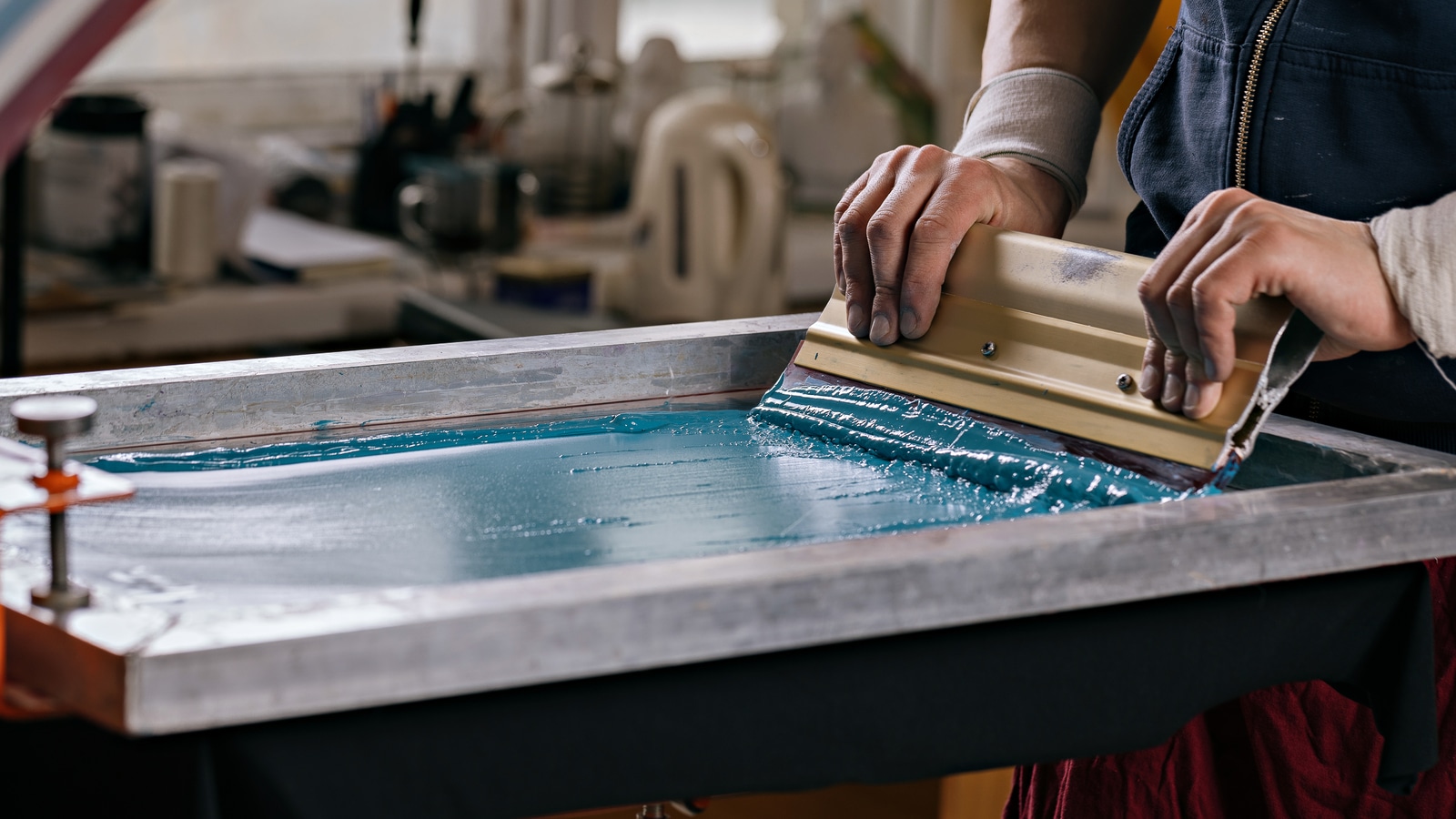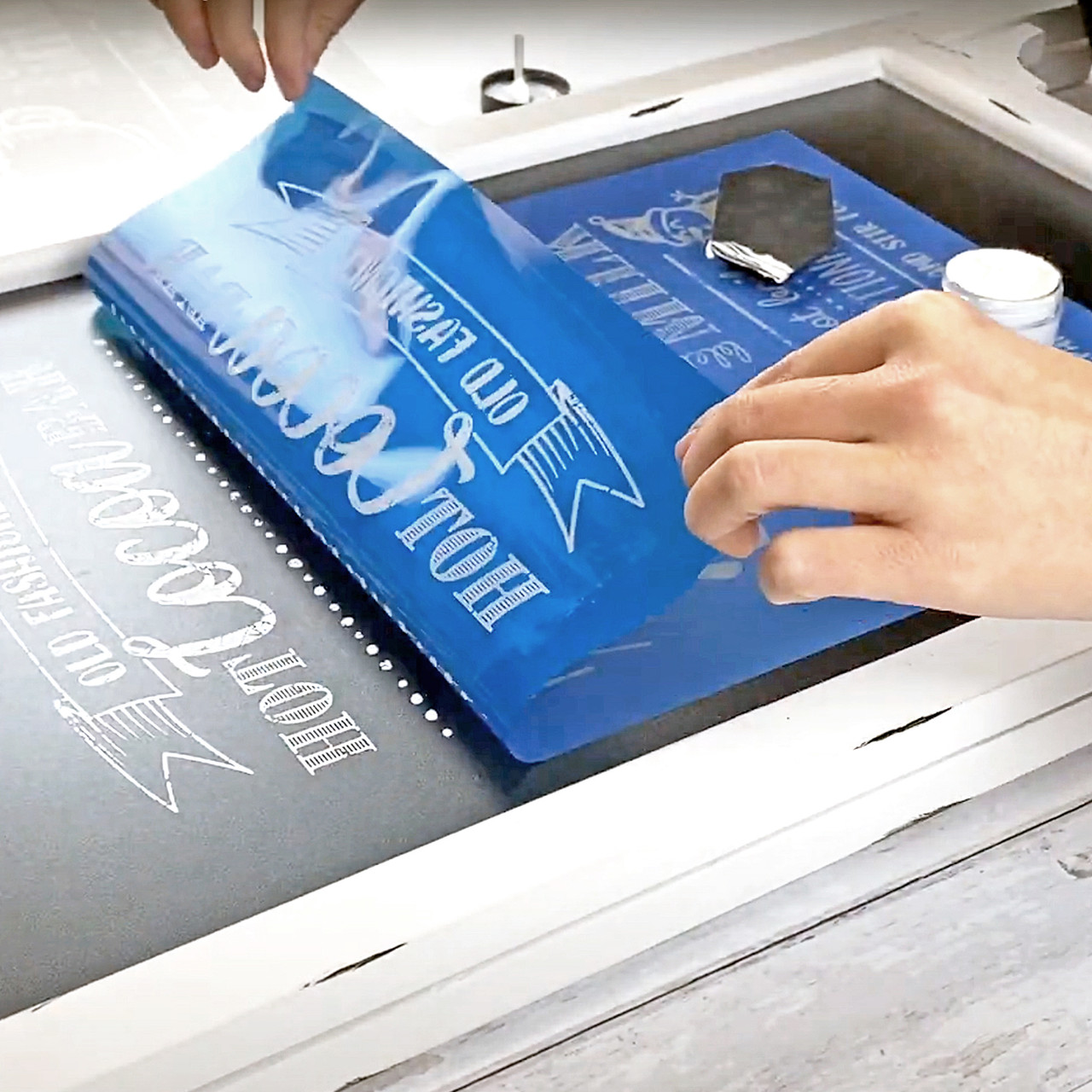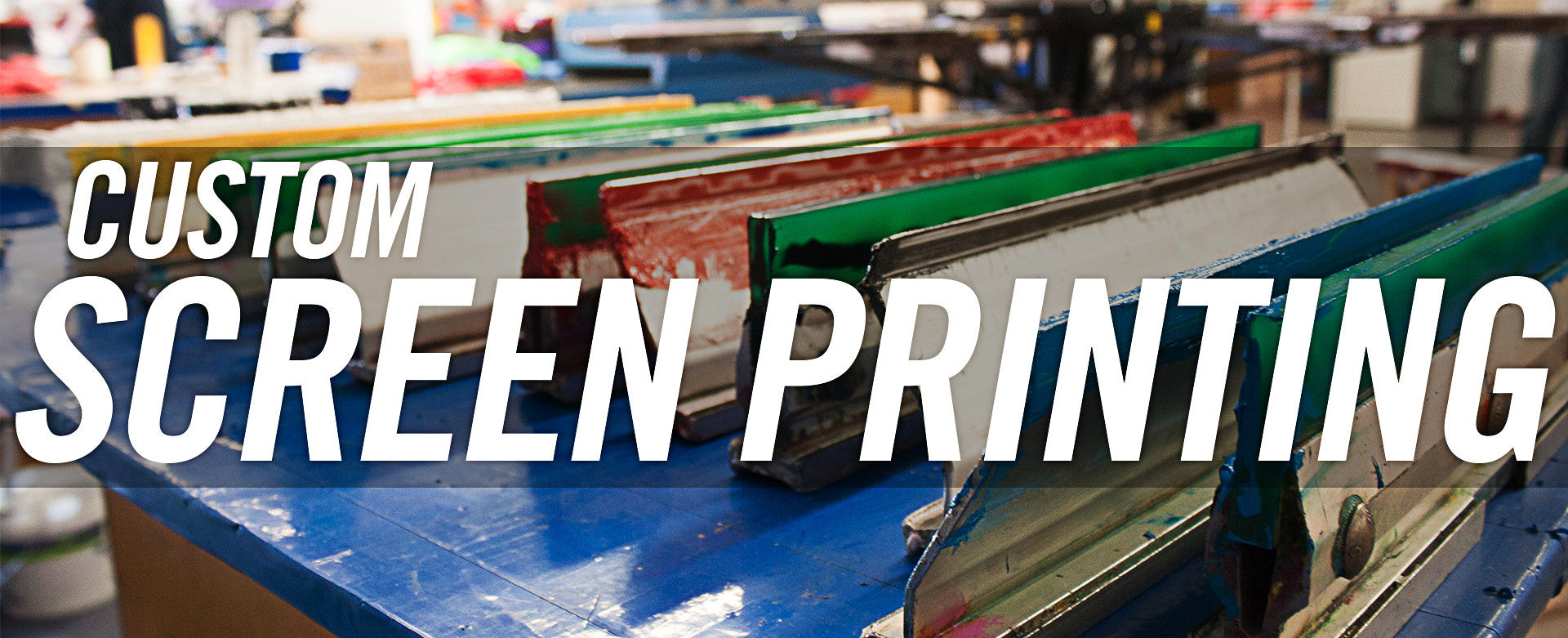Eco-Friendly Custom Screen Printing Options Available
Eco-Friendly Custom Screen Printing Options Available
Blog Article
Display Printing Uncovered: Everything You Need to Learn About Tee and Garment Printing Strategies
Display printing is an interesting technique that combines art with technique, providing unlimited possibilities for creativity. Ready to explore the important elements that make display publishing an art type?
The Basics of Display Printing: How It Works
When you dive into display printing, you'll find it's both an art and a science. At its core, screen printing entails creating a pattern, or display, that allows ink to pass via only in certain areas.
Next, you'll blend your inks and prepare your printing surface. Placement the display over the textile, then use a squeegee to push ink via the screen onto the garment. This procedure requires accuracy, as you desire clear, vibrant prints. After printing, you'll cure the ink with warm, guaranteeing it follows the textile and lasts through laundries. Each action is essential, and understanding them will raise your display printing abilities, changing easy garments right into unique, expressive items.
Kinds of Display Printing Strategies
As soon as you realize the essentials of display printing, it's time to discover the numerous methods that can raise your designs. One popular method is conventional screen printing, where ink is pressed through a stenciled screen.
If you're aiming for great information, think about discharge printing. This method eliminates color from the fabric, leaving a soft, classic appearance. Another alternative is plastisol printing, understood for its resilience and vivid shades, making it a preferred for many brands. Ultimately, explore halftone printing to create slope impacts and elaborate styles. Each strategy has its unique beauty, so don't think twice to try them bent on locate what fits your design best!
Vital Tools for Screen Printing
To accomplish spectacular lead to screen printing, having the best tools is essential. Initially, you'll need a strong display printing structure, which holds the mesh that transfers your layout onto the garment. Next off, invest in top quality squeegees; these are essential for applying ink equally across the screen. You'll likewise call for a great direct exposure unit to produce your screens, along with a washout cubicle for cleansing them after use. A dependable warm source, like a conveyor clothes dryer or warmth press, is essential for healing your prints to ensure durability. Do not neglect a correct work area, geared up with tables and storage for your materials. Finally, protective gear, such as handwear covers and masks, will keep you risk-free from chemicals and inks. With the right devices, you'll be well on your method to creating professional-quality prints.
Selecting the Right Inks and Materials
When choosing inks and products for screen printing, you need to take right into account the kind of ink that works best for your project. Assume about textile compatibility to assure your layouts look last and excellent lengthy. Discover eco-friendly ink options to make your printing procedure more sustainable.
Sorts Of Screen Inks
Choosing the best display ink is vital for achieving lively, sturdy prints that meet your job's demands. There are several types of display inks to check out. Specialty inks, such as metal or glow-in-the-dark, can add special effects to your styles.

Material Compatibility Considerations
Understanding fabric compatibility is vital for achieving high-quality display prints, especially considering that various materials respond distinctly to numerous inks. When selecting inks, think about the fabric kind-- cotton, polyester, or blends. For cotton, water-based inks work well, providing softness and breathability. Polyester, on the various other hand, frequently needs plastisol inks for better attachment and vivid colors. You might need to use a combination of both kinds if you're publishing on blends. Always test your inks on sample textile to ensure they stick effectively and preserve shade stability. Additionally, bear in mind that textile weight and texture can influence the final end result, so selecting the right ink and product combo is essential for your job's success.
Eco-Friendly Ink Options
Green inks are becoming a prominent selection for screen printers that wish to minimize their environmental impact while preserving top quality. When selecting inks, think about water-based inks, which are much less damaging and less complicated to tidy up compared to conventional solvents. These inks bond well with textiles, delivering lively outcomes without poisonous chemicals. You might likewise discover eco-solvent inks that make use of less volatile natural compounds (VOCs), making them a much safer choice for both your health and wellness and the earth.
Additionally, look for inks made from sustainable resources, such as soy or vegetable-based options. By choosing the best inks and products, you'll not only create spectacular designs but likewise add to a more lasting printing procedure. Make the button, and your prints will certainly mirror your dedication to the setting!
Preparing Your Design for Display Printing

File Layout Requirements
To assure your style looks sharp and vibrant on material, you'll require to pay close interest to submit style demands for display printing. Make certain your layout has a transparent background to prevent unwanted white edges on your prints. Keep color modes in mind; CMYK is typical for screen printing, so convert your RGB designs accordingly.
Color Splitting Up Methods
Shade splitting up is a vital action in preparing your style for screen printing, and mastering it can considerably improve your print quality. You'll need to break your style into private colors, as each shade needs a different display during printing. Begin by determining all the colors in your design and develop layers each. You can use software application like Adobe Photoshop or Illustrator to isolate and separate shades effectively. Be certain to save each layer as a separate documents, commonly in a style like TIFF or PSD. This precision not only guarantees accurate shade depiction yet also streamlines the printing procedure. By taking notice of shade splitting up, you'll achieve vibrant and expert outcomes in your screen-printed garments.
Resolution and Dimension
Achieving the very best outcomes in screen printing begins with ensuring your design has the best resolution and size. Ideally, your artwork needs to be at least 300 DPI (dots per inch) for sharp, clear prints. Your final product could look amateur and pixelated. if you use lower resolution.
When it concerns dimension, consider the dimensions of your print area. Style your artwork to match the his response final print dimension, preferably developing it in the real measurements you'll be publishing. By doing this, you'll prevent any type of unforeseen scaling issues.
Always check your style in both vector and raster styles. Vector graphics can be scaled without losing top quality, making them optimal for display printing. Preparing properly will assure your layout looks remarkable on every garment!
Step-by-Step Display Printing Refine
Display printing is a vibrant process that allows you to produce lively styles on different surfaces. To obtain started, you'll need a screen, solution, and your picked ink. Prepare your screen by cleaning it thoroughly. Next, apply the solution equally and allow it completely dry in a dark area. When dry, expose your screen to light with your layout positioned on it, which will harden the emulsion where the light hits, developing a pattern - screen printing kit.
After rinsing the unexposed emulsion, your screen prepares. Set it up on your printing surface area and align your garment underneath it. Put ink onto the display and use a squeegee to press the ink through the pattern onto the material. Raise the display meticulously and let the print dry. Cure the ink making use of warm to ensure longevity. That's it! You've effectively screen printed your layout.
Tips for Successful Display Printing Projects
While you're diving right into your screen printing projects, keep in mind that preparation is key to success. Begin by gathering all your materials-- inks, screens, garments, and mops. A tidy workspace helps protect against unwanted errors, so clean up before you begin.
Following, validate your artwork is high-resolution and correctly sized for your garment. Check your screen for correct exposure and clean it thoroughly to stay clear of smudges. When mixing your inks, adhere to the maker's guidelines to accomplish the appropriate consistency.
Throughout printing, use also pressure with your squeegee for constant outcomes. Do not rush; take your time to confirm each print satisfies your requirements. After printing, let your garments dry totally before handling or packaging them.
Last but not least, always maintain a sample of your benefit future referral. By doing this, you can evaluate your progression and boost your methods over time. Satisfied printing!

Often Asked Inquiries
For how long Does It Require To Establish a Screen Printing Work?
Establishing a screen printing task normally takes around 30 mins to an hour. You'll prepare the screens, mix inks, and change journalism. The time varies based on intricacy and experience, so stay arranged!
Can I Publish on Various Material Types Utilizing the Very Same Technique?
Yes, you can publish on different fabric types using the exact same method, yet you'll require to readjust your setups and inks. Some materials absorb ink in different ways, so trying out guarantees the most effective outcomes for every product.
What Prevail Blunders to Prevent in Display Printing?
When screen printing, avoid common blunders like making use of the incorrect ink, overlooking appropriate direct exposure times, or missing pre-press checks. Always test your configuration and maintain tidy screens to ensure top quality outcomes each time.
How Can I Appropriately Tidy and Keep My Display Printing Equipment?
To effectively tidy and preserve your screen printing equipment, you should frequently clean screens with proper solvents, inspect squeegees for wear, and assure all tools are saved dust-free and dry. Consistency prevents costly repair work and improves efficiency.
Is Screen Printing Eco-friendly Compared to Other Methods?
Display printing can be much more environmentally pleasant than other approaches, specifically if you utilize eco-conscious products and water-based inks. By choosing sustainable supplies and read this article techniques, you minimize waste and minimize your impact on the earth.
Screen Printing Uncovered: Whatever You Required to Know Concerning T-Shirt and Garment Printing Strategies
At its core, display printing involves creating a pattern, or screen, that enables ink to pass through just in certain areas. Position the screen over the material, then utilize a squeegee to press ink through the display onto the garment. One preferred approach is traditional display printing, where ink is pushed via a stenciled display.When selecting inks and materials for screen printing, you require to take right Recommended Site into account the type of ink that works best for your task.
Report this page